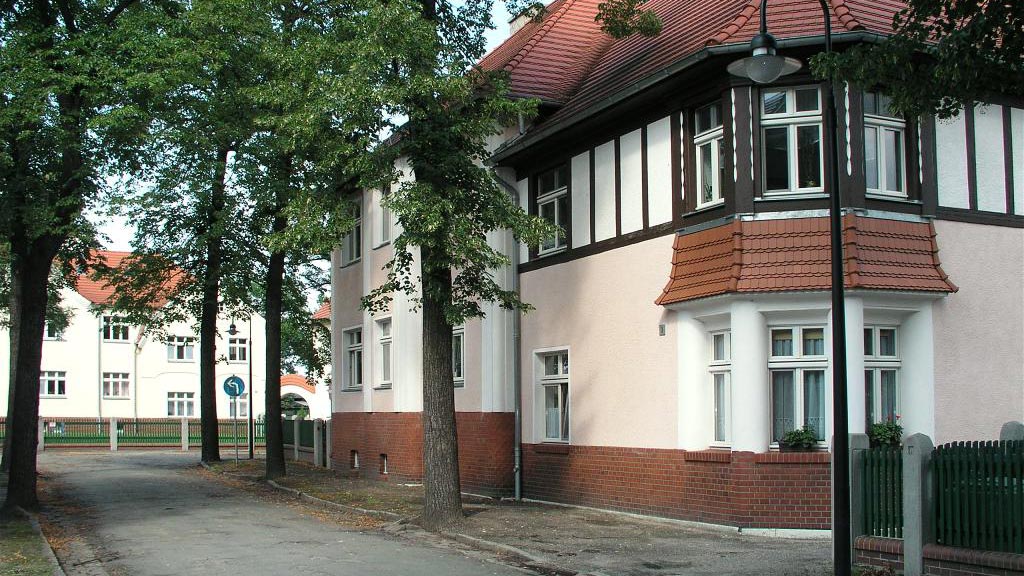
Gartenstadt Marga
Brieske, Germany
A German factory town which was strongly influenced by the garden city ideas.
| Garden City Type: | Former company town |
| Country: | Germany |
| City: | Brieske |
| Years of construction: |
1907 Start construction 1915 Completion
|
| Initiator/client: | Ilse Bergbau AG |
| Architect or related: |
Georg Heinsius von Mayenburg Georg Heinsius von Mayenburg (November 27, 1870 - April 17, 1930) was a German Architekt. Apart from the buildings, he also designed the layout of Marga. Von Mayenburg on Wikipedia [in German] |
| Heritage status: | Yes |
| Explanation: | The settlement was listed in 1985 and renovated from 1998 to 2000. |
| General condition of Garden City: | Good condition |
General description
Gartenstadt ('garden city') Marga in Brieske near Senftenberg (Brandenburg) was built between 1907 and 1915 as a working colony of mining company Ilse Bergbau AG. Its director Gottlob Schumann wanted to tie his workforce more closely to the company. Therefore he created the factory settlement Marga, which names was derived from the Marga mine in Brieske from 1906 – which in turn was named after Schumann's daughter. The architect of the settlement was Georg Heinsius of Mayenburg.
 Platz des Friedens (SPBer / Wikimedia Commons, 2008)
Platz des Friedens (SPBer / Wikimedia Commons, 2008)
Due to its appearance, Marga is often referred to as the first German garden town. Contrary to a typical garden city however, this factory settlement wasn't based on a cooperative model, nor was it self-contained.
Architecture / Urban planning
Gartenstadt Marga was influenced by the English garden city design of urban planner Ebenezer Howard. It features a circular layout (the Ringstraße), with a central town square with public buildings (the market square Platz des Friedens), from which streets radiate. The houses around the town square have gardens. Originally 78 houses were built, with approximately 15 different types of houses, with a lot of variety among them. Their style was inspired by English country cottages and half-timbered designs from rural Saxony. Archways connect individual buildings.
The residential area was separated from the adjacent industrial area by a greenbelt. This green ring surrounding the settlement was divided into various functional areas: festival meadow, sports field, factory garden, kindergarten, and nursery. Due to later developments, the green ring nowadays is hardly there anymore.
Sources
- Website URL
Wikipedia [in German]
- Website URL
- Publication
Gartenstadt Marga Flyer [In German]


